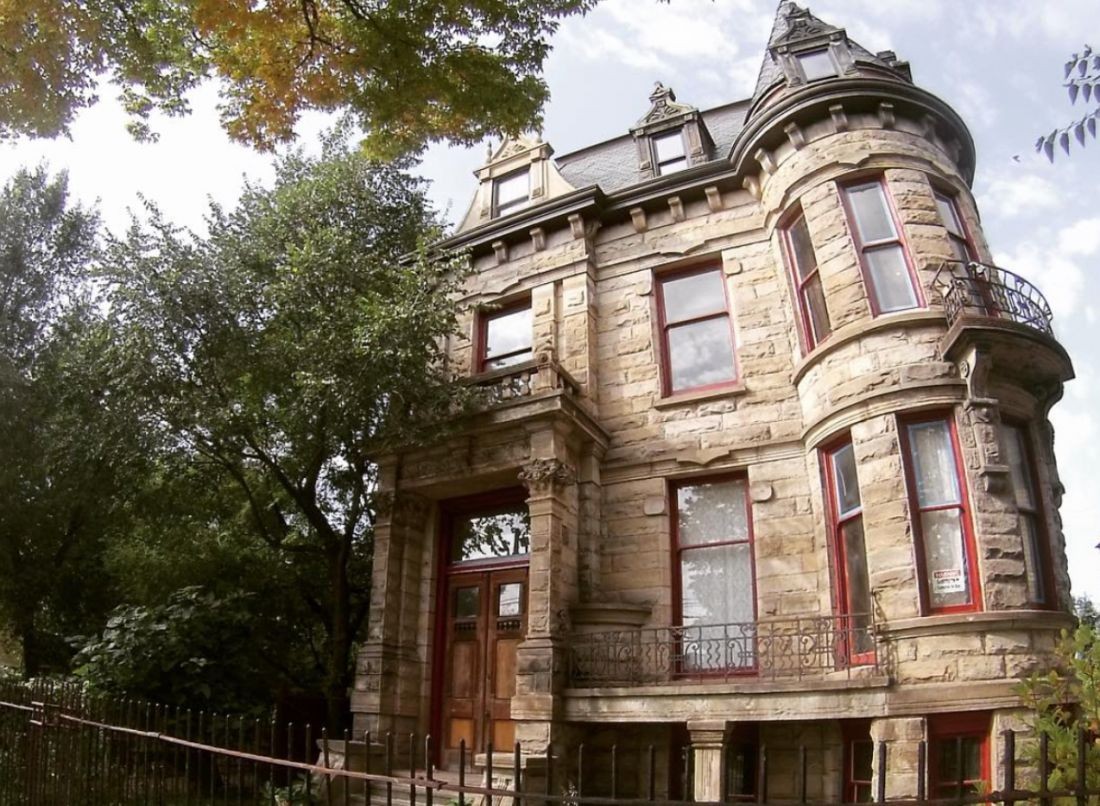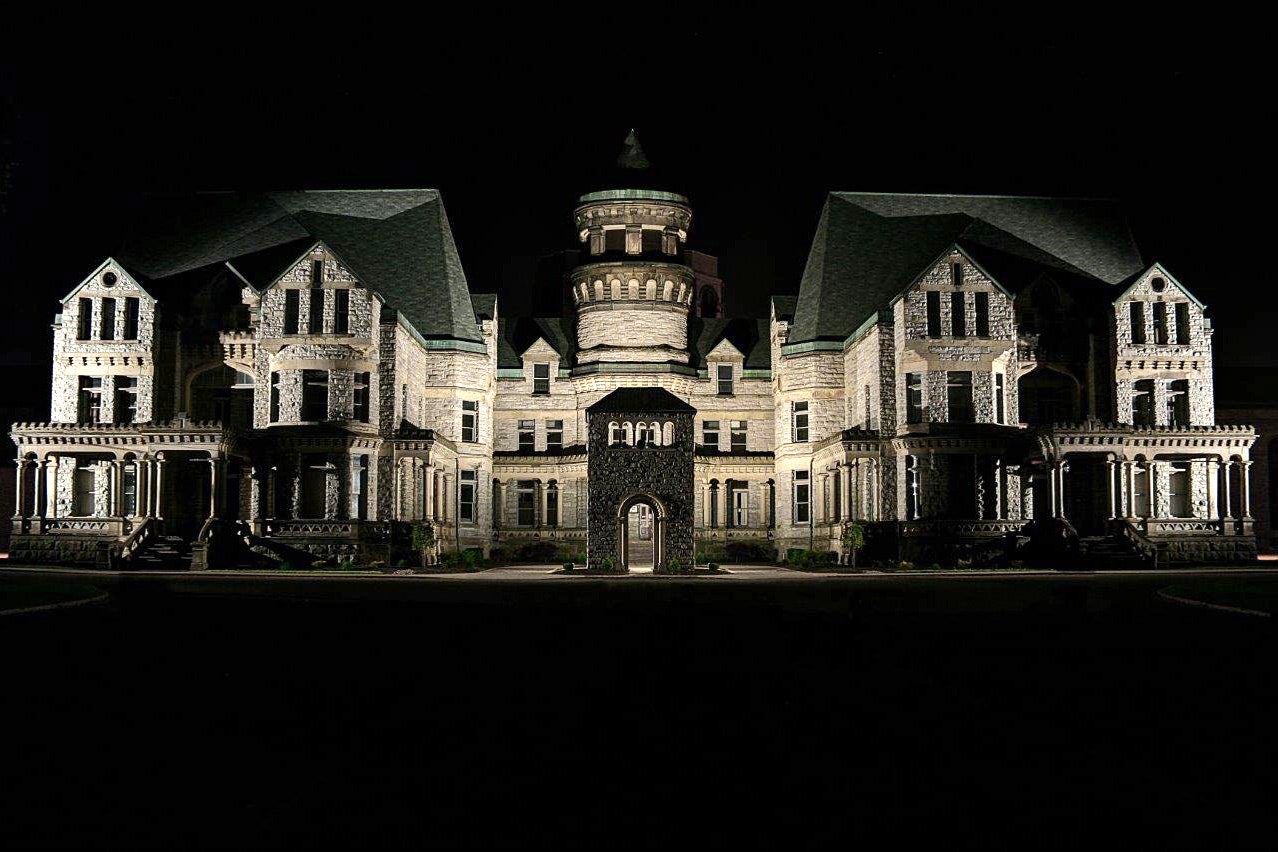The legend of Athens Lunatic Asylum cannot be complete without talking about the mysterious missing case of Margaret Schilling and the fabled body stain of hers. The story of Schilling dates back to December 1, 1978 when she was reported missing by a nurse patrolling the wards. Oftentimes, those who wander off into the woods or other buildings in the asylum are found easily by caretakers of the asylum. However, Schilling disappeared for a total of six weeks.
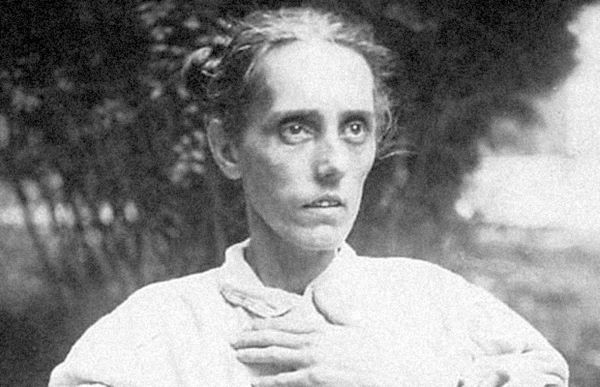
It was only on January 12, 1979 when her lifeless body was discovered in an abandoned ward in a tower previously used for patients with tuberculosis. Strangely, Schilling was found naked with her neatly folded clothes placed right next to her remains. An autopsy concluded that she had died from heart failure, presumably from the prolonged exposure to the cold temperature.
Some believed that she was a deaf-mute who wandered into the abandoned wing and managed to locked herself up in the unused ward. However, it remains unknown as to why she took off her clothes and laid down on the floor in an orderly fashion.
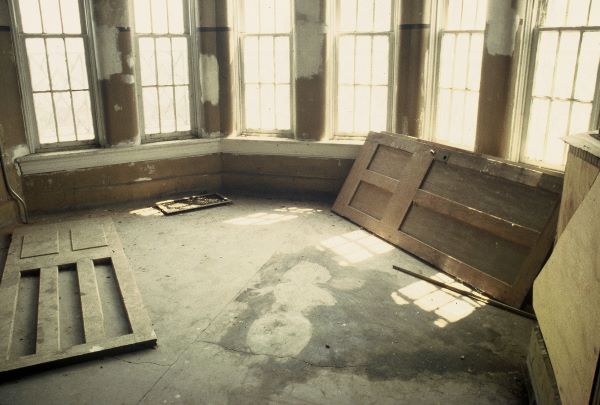
The most frightening detail about the story of Margaret Schilling is none other than the permanent chalk-like stain that her decayed body had left behind. In spite of countless attempts to clean up the stain with cleaning products, it could not be removed. Experts believed that a highly toxic cleaning agent previously used to clean up the room may have mixed with Schilling’s body fluid and seeped into the floor, leaving a permanent imprint that cannot be washed off. In 2008, a study from the Journal of Forensic Science concluded that Schilling’s body fats may have decomposed and formed a soap which trickled into the crevices of the concrete floor. As of January 2022, the body stain of Margaret Schilling can still be seen.
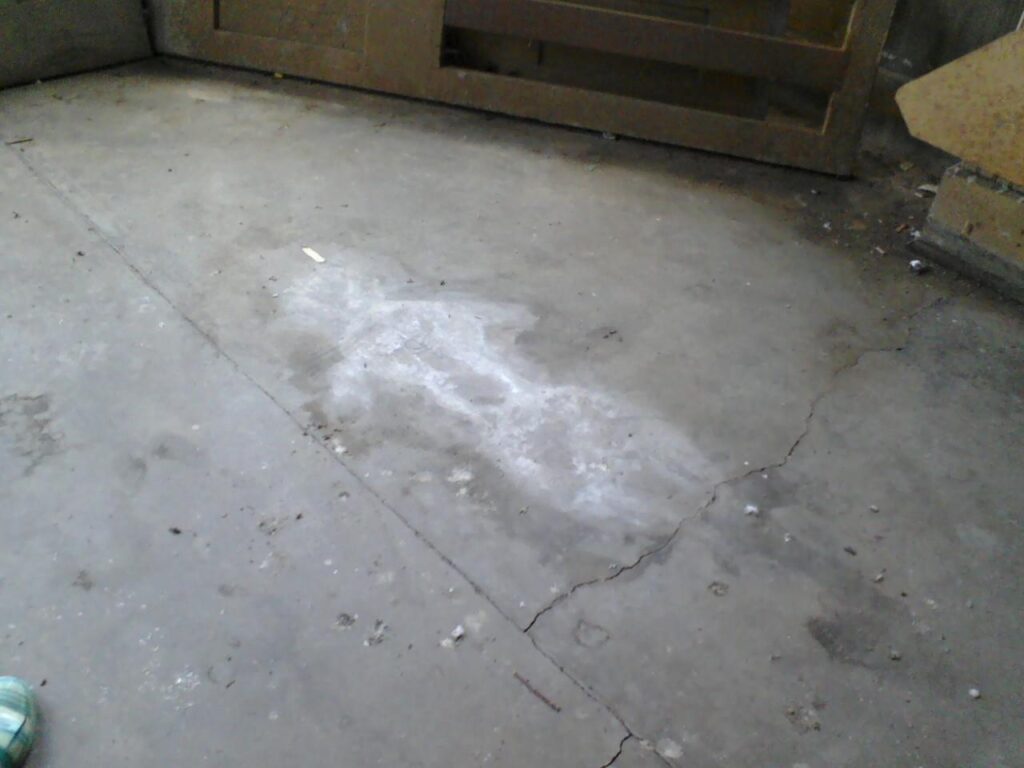
History of Athens Lunatic Asylum
Now known as The Ridges, the historic site once known as Athens Lunatic Asylum began operations over a century ago on January 9, 1874, when it received its first batch of patients. The design of the buildings largely follows the Kirkbride Plan, a system of mental asylum design pioneered by Thomas Story Kirkbride; the plan describes how mental asylums should be built and patients should be treated in the institution. Asylums that adopt the Kirkbride Plan are easily recognized by the unique “bat wing” architectural design which features a central building with wings (wards) spreading outwards from the center.
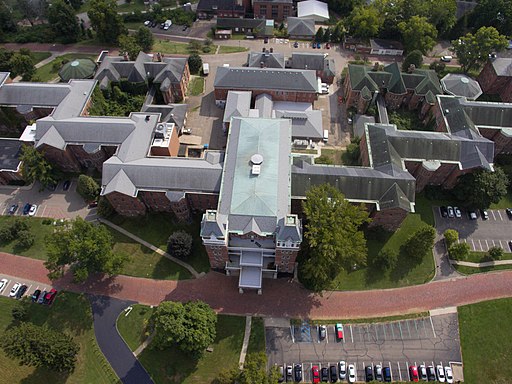
Over the years, the asylum went by several names including Athens Lunatic Asylum, Athens Asylum for the Insane Athens State Hospital, Southeastern Ohio Mental Health Center, Athens Mental Health and Mental Retardation Center, Athens Mental Health and Developmental Center, and Athens Mental Health Center.
Similar to many asylums across the countries, Athens Lunatic Asylum was cordoned off from the public and was mostly self-sufficient. For decades, the hospital operated farms, gardens, greenhouses, a plant (to generate steam heat), and even a carriage shop. Many of the menial tasks were done by able-minded patients as it was seen as a “meaning occupation” in the “moral treatment” model found in Kirkbride Plan. Skilled labor such as carpenters, cooks, seamstresses and carriage drivers were hired on top of medical staffs and attendants to ensure the smooth operation of the asylum. At its peak, Athens Lunatic Asylum was the largest employer in Athens, hiring well over two thousand staffs to oversee the 1,019-acre, 78-building asylum.
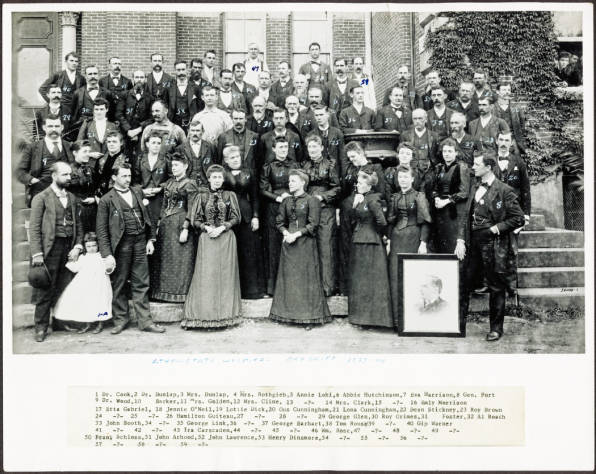
Similar to Trans-Allegheny Lunatic Asylum in West Virginia, Athens Lunatic Asylum also suffered from overcrowding. This is due to the fact that apart from serving the mentally ill, the asylum also took in homeless military veterans, elderly, and the poor. At its peak, each caretaker was tasked with taking care of as many as forty patients. In order to ‘tame’ and ‘cure’ patients who are mentally ill, the institution resorted to electroshock therapy, insulin shock treatments, and in the worst cases, lobotomies.
However, greater knowledge of mental illness in the 1950s and increasing public awareness of these inhumane treatments prompted for reforms in the mental healthcare industry. This renaissance was bolstered by the passing of new healthcare bills such as the Community Mental Health Act in 1963 and Medicaid in 1965, causing a significant outflow of patients from mental institutions to community care facilities. By the 1980s, the institution had less than 300 patients. In 1993, citing a lack of state funding and a sharp decline in in-house patients, Athens Lunatic Asylum (then known as Athens Mental Health Center) closed its operations. The remaining patients were transferred to Southeast Psychiatric Hospital, better known as Appalachian Behavioral Healthcare today.
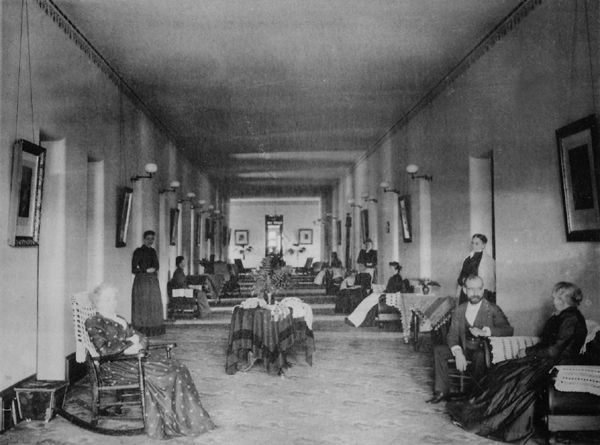
Since the 1960s, pieces of land belonging to the asylum were being bought up by Ohio University. The final change of hand happened in the same year of the asylum’s closure when the entire property was transferred to Ohio University in a land swap with Ohio’s Department of Mental Health. After a series of restoration projects, the site is rebranded as a mixed-use university development called The Ridges. Many of the buildings have been converted into classrooms and administrative offices for the university while a handful was used as public institutions including the Kennedy Museum of Art, The Dairy Barn Arts Center, and Voinovich School of Leadership and Public Service. That said, a majority of the buildings remains unoccupied and are in a state of disrepair.
Cemeteries at The Ridges
Also housed within The Ridges are three cemeteries that housed the interments of approximately 1930 people who have passed away or once lived in Athens Lunatic Asylum. Apart from the mentally-ill patients, headstones of veterans who have spent time at the asylum can also be found; most of them were suffering from post-traumatic stress disorder (PTSD).

To unearth more information about the graveyards and establish the identity of the unmarked headstones, a collective effort was launched by several non-profit organisations including the National Alliance on Mental Illness (NAMI) to restore the three cemeteries. Since then, over 1,700 names have been identified. A ceremony was also held annually on Memorial Day to recognize the the veterans who have sacrificed for the nation and lived their remaining days at the Athens Lunatic Asylum.
Hauntings at Athens Lunatic Asylum
The story of Margaret Schilling does not end with her body stain. Many who walked past the building where Margaret Schilling’s stain is have reported seeing a strange figure by the window, as if someone was peering out from the room. Thrill seekers who have explored the abandoned wards in search of the stain have also reported seeing a dark apparition darting along the corridors. In one story, a female student touched the stain as part of a dare challenge and was possessed by the ghost of Margaret Schilling; she is said to have committed suicide days after the incident.
Apart from Margaret Schilling, other former patients are said to linger at Athens Lunatic Asylum long after their passing. Reports of paranormal happening range from dark figures along the hallways and flickering lights to disembodied voices and doors moving on their own. Those who have ventured into the basement have also claimed to have close encounters with ‘shackled’ ghostly apparitions.
The three cemeteries are also said to be active spots, with paranormal investigators recording several terrifying electronic voice phenomena (EVP) during their investigations at the graveyards.
Billy Milligan and His 24 Personalities
The most infamous patient ever to stay at Athens Lunatic Asylum is William “Billy” Milligan, the multiple-personality serial rapist. Milligan was charged for three counts of kidnapping, three counts of aggravated robbery and four counts of rape accounts. He was detained at Ohio State Penitentiary, where a psychological evaluation diagnosed him with multiple personality disorder, or dissociative identity disorder. After a longstanding trial, Milligan became the first person to ever be acquitted of a crime by using multiple personality disorder as an insanity defence; he claimed that two of his alternate personalities committed the heinous crimes without Milligan being aware of it.

Milligan was promptly admitted to Athens Mental Health Center. where a further diagnosis revealed that he had 24 personalities including himself. This includes:
- Arthur, an Englishman skilled in the areas of science and medicine
- Allen, a manipulator who is the only right-handed individual out of all the personalities
- Tommy, an escape artist that plays the tenor sax and is an electronics expert
- Danny, a quiet personality who paints still lifes.
- Ragen Vadascovinich, a Yugoslav communist who committed the robberies using Milligan’s body to support the ‘family’
- David, an eight-year-old boy who is the ‘keeper of pain’.
- Christene, a three-year-old girl who is dyslexic. She was taught to read and write by Arthur.
- Christopher, the elder brother of Christiene.
- Adalana, a 19-year-old lesbian who committed the rapes out of affection for the victims
- Phil, a thug with a Brooklyn accent. He had also took part in several crimes.
- Walter, an Australian who calls himself a big-game hunter due to his involvement in the spot
- April, an undesirable personality who desired to kill Billy’s stepfather.
- Samuel, a Jewish who believes in God
- Kevin, a criminal who helped planned the robbery of a store.
- Mark, a workhorse who is also known as the zombie because he would often stare into the walls like one.
- Steve, an imposter who imitates other personalities and people for fun.
- Shawn, a four-year-old boy who is deaf; he is said to make buzzing noise in order to feel vibration in his head.
- Martin, a pretentious personality from New York
- Timothy, a male who once worked in a florist shop.
- Lee, a prankster that often gets Billy into unwanted troubles. He was responsible for making jokes that got Billy into solitary confinement.
- Jason, a male who was seen as the pressure valve to help release tension for the different personalities
- Bobby, an dreamer who dreamt of solving global crisis and going on a big adventure
- Teacher, a personality who had the talent and attributes of all the other personalities
- Billy, the core personality
After almost a decade in the various mental asylums, Milligan was determined to be of no danger to the society and was discharged from the Ohio mental health system in 1988. Three years later in 1991, Milligan was released from all supervision from the Ohio courts. The life of Billy Milligan was featured in a non-fiction novel called The Minds of Billy Milligan as well as a four-part documentary by Netflix titled “Monsters Inside: The 24 Faces of Billy Milligan”. M. Night Shyamalan’s ‘Split’, which stars James McAvoy playing a man undergoing therapy for his dissociative identity disorder, was also based on Billy Milligan.
Billy Milligan passed away in a nursing home in Columbus, Ohio on December 12, 2014.
Directions to The Ridges (Athens Lunatic Asylum)
To visit The Ridges (former site of Athens Lunatic Asylum), drive East-West bound between Richland Avenue and W Union Street. Spot for the “N Ridge Dr” sign on the left and turn left into the small road. Drive to the end of N Ridge Dr and turn left into Ridges Cir. The building on the right, which is the former administration center for Athens Lunatic Asylum, now houses Kennedy Museum of Art.
In general, visitors are allowed to visit the compounds of The Ridges. However, due to safety concerns, access to the abandoned asylum buildings are strictly prohibited by Ohio University. You are also highly discouraged to visit The Ridges or the buildings after nightfall. To get a full understanding of the history behind Athens Lunatic Asylum and the buildings, opt one of “Walking Tour of the Historic Athens Asylum” offered by long-time Appalachian Behavioral Health employee and Athens Asylum advocate, George Eberts. Note that tours are only offered on selected dates throughout the month of October and November.
To view a map of all the buildings in The Ridges, visit The Ridges Map offered by Ohio University.


